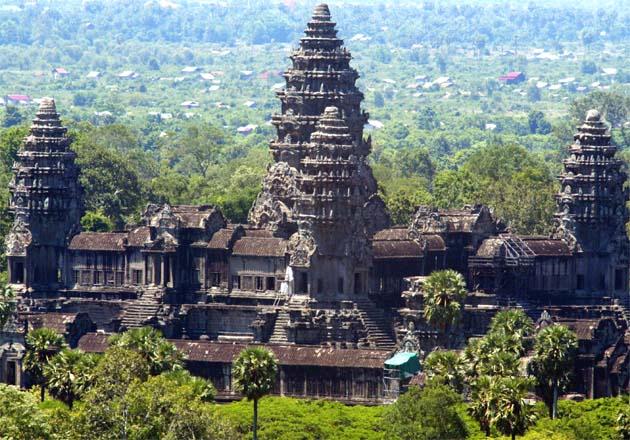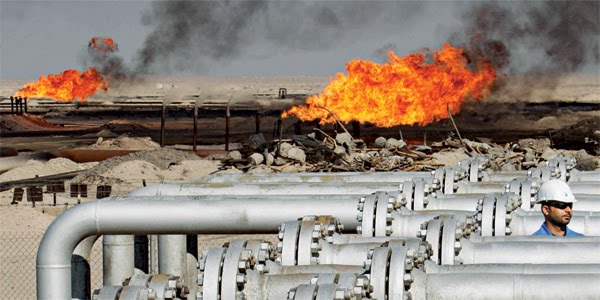
Built to honor Vishnu between 800-1100 CE, and believed to be a replica of the home of gods, the ancient Angkor Wat is one of the largest religious temples in the world. Of the five large towers, the central tower is said to represent Mount Meru, where Shiva resides at the center of the world according to Hindu mythology. In all, there are 108 lotus bud shaped towers, a sacred number to both Hindi and Buddhists. More impressive than the structure of the city itself, are over 2,000 divine nymph figures called Asparas decorating the walls and towers. Among the nymphs are bas-reliefs describing the Hindu legends including the ancient battles (some fought in the sky), the 32 hells, 37 heavens and the creation myth Churning the Sea of Milk. Incredibly, this very large, elaborately constructed temple aligns with the constellation Draco of 10,500 BCE for the spring equinox. Attuned to the sun and moon, further studies have found the bas-relief to function as a marker for the days between winter and summer solstices, opening the door suggesting further hidden cosmological meaning. Over five million tons of sandstone was quarried and transported 25 miles to the temple.
For many years, Angkor Wat was totally isolated from the Western World. Large, thick jungles covers the area, and it is located in the center of Cambodia. The French colonialists were the first westerners to get exposed to Angkor. They heard rumors from the local population about “temples built by gods or by giants.” Most of the colonialists referred these rumors to folk tales, but some believed that there really was a “lost city of a Cambodian empire”, which had once been powerful and wealthy.
The temples were first discovered by French missionaries in 1860. Henri Mahout, a French botanist started intensive research and restoration programs. These research efforts continued until 1968, when the Vietnam war disrupted the studies. Initially, he did not believe that the temples were built by Cambodians, but by another race which had concurred and occupied Cambodia for over 2000 years ago. His theory would later be proven to be incorrect, after that researchers discovered scripts on the walls of the temples, and stone sculptures, that have made it possible for archeologists to piece together the history of Cambodia. Now it is known that Angkor, was the great capital city of the Khmer empire from the city’s founding in about AD 880 until about 1225.
The history of Angkor Wat dates back to the kingdom of Funan. This kingdom was established by an Indian Brahmin, and in AD200, the country was peacefully settled by Indian traders. Four hundred years later, the kingdom had become a prosperous trading region. As the area was located on the Pilgrim rout between China and India, Hinduism and Chinese Buddhism was adopted by the new settlers. The Indian and Chinese influence can still be felt in Cambodia, and the temples of Angkor Wat closely resembles Hindu and Buddhist temples that can be found in Northern India and in Nepal. In the end of AD600, the Funan Empire lost much of its power to the kingdom of Chenla. The capital of this new empire, Sambor, was located about 40 miles to the Southeast of Angkor. During this time, beautiful sculptures and carvings in sand-stone was popular. In AD750, a king with a reputation of being a war-like person, who was able to expand the Chenla kingdom. However, trade with India stopped, and the Indonesian Empire raised to power.
In AD800, the kingdom of Kambuja was established, and king Jayavarman I took control over the kingdom. He built several capitals near Angkor Wat, were responsible for many social changes, and was able to size land to the North and to the East. In AD889, a nephew of Jayavaram became the new emperor, and he was able to bring peace and unity to the Khmer Kingdom. In AD944, Jayavarman V established many Mahayana Buddhist temples near Angkor, and moved the court to Yasodharapura, at Angkor. Cultures prospered, and so did the Khmer empire. In AD1000, Suryavarman, a young man who may have come from the Malayan provinces of the empire, ascends the throne of Kambuja. He would become the king of Kambuja for over 50 years. He is responsible for the planning and foundations of the city of Angkor. In AD1051, Udayadityavarman II succeed Suryavarman, and continued to build the city of Angkor, and restored many of the temples. Angkor was now both a sacred temple city and the center of a vast irrigation system.
Originally posted 2016-03-03 08:28:00. Republished by Blog Post Promoter

![angor-wat[1]](https://coolinterestingnews.com/wp-content/uploads/2016/03/angor-wat1.jpg)










